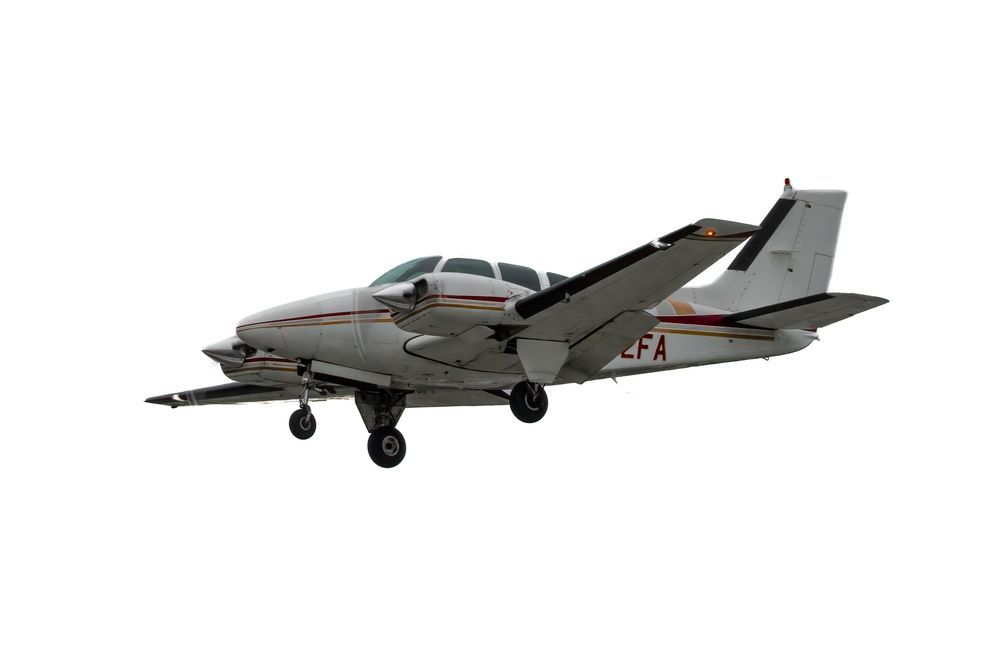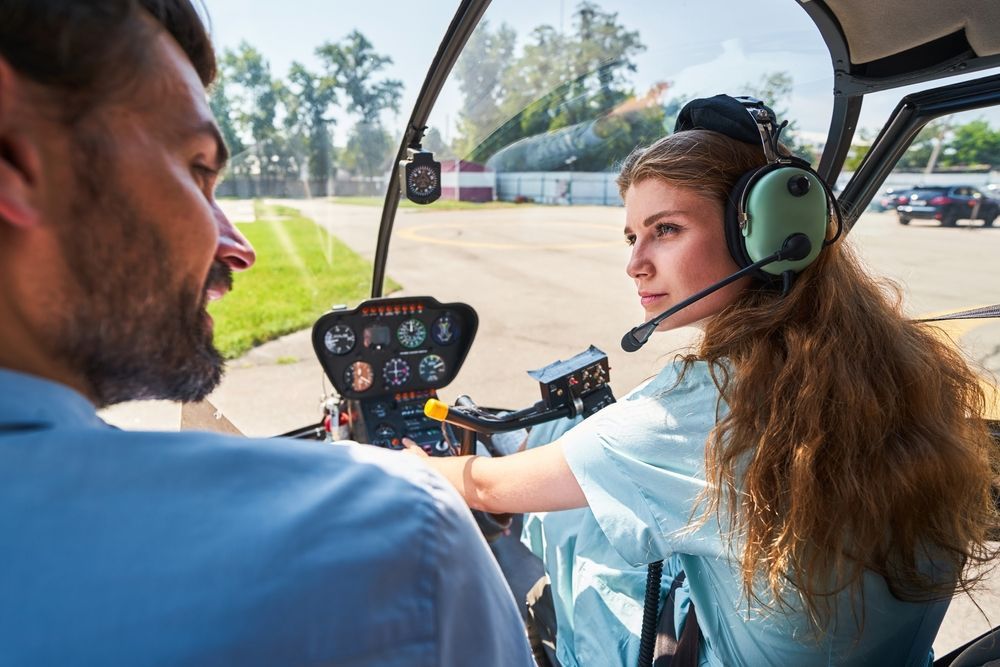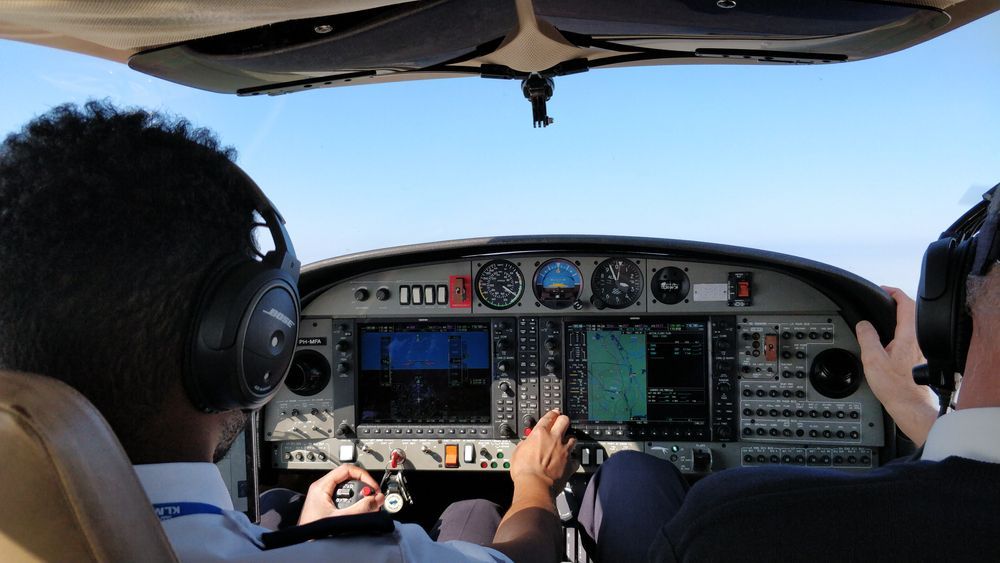What Is Ground School?
Share this article:
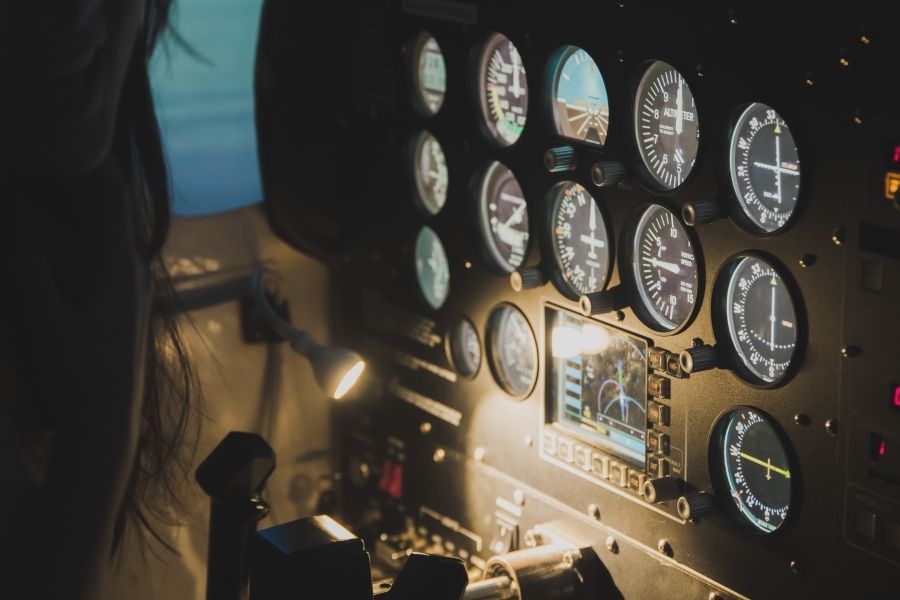
A private pilot license gives you the freedom to fly an airplane for personal purposes. Although a private pilot license does not require as much training as for higher ratings, there are still time and knowledge requirements that can only be achieved through formal training.
Ground school is the first step of training for a private pilot license. Exactly how many hours of ground school for a private pilot license? We discuss the minimum hour requirements, and other ground school considerations, in the content below.
What is Ground School for pilots?
There are two types of pilot schools: Part 61 and Part 141. The Federal Aviation Administration (“FAA”) requires Part 141 schools to have an approved ground training course. For example, J.A. Flight Services is an FAA-approved Part 141 flight school, and we offer a ground school program.
Ground school is an early step in flight training and is more theoretical than flight school. You will study aviation-related topics such as aerodynamics, airport rules, aircraft instruments, and the weather. This is designed to help you pass the applicable knowledge tests for a pilot license.
Ground School vs. Flight School
Ground school is an early step in flight training and is more theoretical than flight school. You will study aviation-related topics such as aerodynamics, airport rules, aircraft instruments, and the weather. This is designed to help you pass the applicable knowledge tests for a pilot license.
Flight school, by contrast, is hands-on and the stage where you begin actually flying. Here, you will take practical lessons from an instructor to learn how to pilot an aircraft. Ultimately, flight school is designed to prepare you for a practice test with an examiner.
What Types of Pilot Schools Offer Ground School?
There are two types of pilot schools: Part 61 and Part 141. The Federal Aviation Administration (FAA) allows pilot schools to operate under either of these two categories.
Part 141 schools are required to have an approved ground training course. For example, J.A. Flight Services is an FAA-approved Part 141 flight school, and we offer a ground school program.
How Many Hours of Ground School for a Private Pilot License?
A private pilot license requires passing an aeronautical knowledge test. The test topics include aerodynamics, FAA regulations, navigation, and radio communication procedures.
As explained in the federal regulation Appendix B to Part 141 – Private Pilot Certification Course , the FAA does require a minimum of 35 hours of ground school for a private pilot license to fly an airplane. (The required hours for a private pilot license to fly other types of aircraft can be shorter: 15 hours for a glider, or 10 hours for a balloon.) In reality, most ground school courses involve more than 35 hours in order to effectively teach the material.
Ground school for a private pilot license generally takes about four weeks to complete. This is especially likely if you take a structured curriculum through in-person classes.
Ground school can also be completed through an FAA-approved home study program, which does not have a set schedule. You can study at your own pace, which means that you can take longer than four weeks to complete ground school. It is highly unlikely that you would be able to complete ground school in less than four weeks because there is a lot of information to absorb. Often, ground school takes several months, or even as long as one year, for students who are studying at their own pace.
A private pilot license requires passing knowledge and practical tests. At the end of ground school, you will take a written examination designed to test your knowledge of the pertinent topics. Although it might seem tedious to spend many hours in ground school, it is certainly more efficient to study thoroughly and take the examination once, rather than failing and re-taking it.
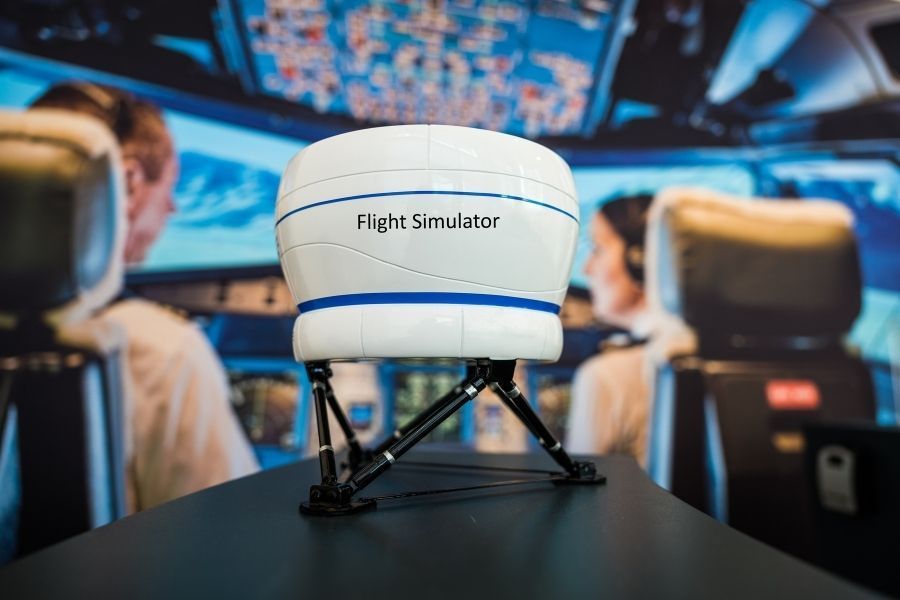
What Can I Expect as a Student in Ground School?
The FAA has minimum curriculum requirements for approved ground training courses. Part 61 schools are not required to offer ground school, but you must receive and log training from an authorized instructor (or complete a home study course) before applying for a pilot certificate.
The minimum study requirements vary depending on the stage of pilot training. Here are the different stages and applicable areas of study:
- Pre-Solo Test: A pre-solo knowledge test must be taken and passed before flying a plane alone for the first time. The test covers airspace rules and procedures for the airport where you plan to take your first solo flight. You must also know the characteristics and operational limitations of the aircraft you plan to fly solo.
- Private Pilot License: A private pilot license requires passing an aeronautical knowledge test. The test topics include aerodynamics, FAA regulations, navigation, and radio communication procedures.
- Sport Pilot License: This is a more limited version of a private pilot license. Nevertheless, a student must pass an FAA knowledge test to receive this license.
- Recreational Pilot License: Although still more limited than a private pilot’s license, a recreational pilot’s license allows you to fly larger aircraft than a sport pilot’s license. Passing a computerized knowledge test is necessary to obtain a recreational pilot license.
- Commercial Pilot License: A commercial pilot’s license requires more intensive training than a private pilot’s license. Attaining a commercial pilot license involves successfully passing knowledge tests in advanced subjects such as high altitude flying, commercial operations requirements, emergency operations, and the use of air navigation facilities.
- Certified Flight Instructor: To be a flight instructor, you must have a commercial pilot’s license. In addition, you should know the fundamentals of instructing flight students.
- Airline Transport Pilot: Becoming an airline transport pilot requires a comprehensive understanding of complex subjects such as weather systems, navigation under instrument meteorological conditions, and crew resource management.
The FAA has minimum curriculum requirements for approved ground training courses. Part 61 schools are not required to offer ground school. However, you must still receive and log training from an authorized instructor (or complete a home study course) before you apply for a pilot certificate.
The FAA requires Part 141 schools to teach the following subjects in ground school:
(1) Applicable Federal Aviation Regulations for private pilot privileges, limitations, and flight operations
(2) Accident reporting requirements of the National Transportation Safety Board
(3) Applicable subjects of the “Aeronautical Information Manual” and the appropriate FAA advisory circulars
(4) Aeronautical charts for VFR navigation using pilotage, dead reckoning, and navigation systems
(5) Radio communication procedures
(6) Recognition of critical weather situations from the ground and in flight, wind shear avoidance, and the procurement and use of aeronautical weather reports and forecasts
(7) Safe and efficient operation of aircraft, including collision avoidance, and recognition and avoidance of wake turbulence
(8) Effects of density altitude on takeoff and climb performance,
(9) Weight and balance computations
(10) Principles of aerodynamics, powerplants, and aircraft systems
(11) If the course of training is for an airplane category or glider category rating, stall awareness, spin entry, spins, and spin recovery techniques
(12) Aeronautical decision making and judgment, and
(13) Preflight action that includes –
- How to obtain information on runway lengths at airports of intended use, data on takeoff and landing distances, weather reports and forecasts, and fuel requirements; and
- How to plan for alternatives if the planned flight cannot be completed or delays are encountered.
Is Ground School Necessary?
In a word, yes! A pilot license requires passing both knowledge and practical tests. At the end of ground school, a written examination is given to test your knowledge of the pertinent topics.
You do not necessarily have to attend a brick-and-mortar ground school, however. Ground school can be completed in multiple formats, such as scheduled classes, weekend programs, or FAA-approved home study courses. Ground school at J.A. Flight Services can be completed in all of the above formats.
Whatever option you choose, make sure to do your research and attend a high-quality ground school program in order to successfully pass the applicable knowledge tests.
How Can I Be Successful in Ground School?
In ground school, you will receive substantial training that will ultimately help you get a private pilot license. Although 35 hours is the minimum FAA requirement for a private pilot license, you should study as long as necessary to pass the written examination and pave the way for success in flight training.
Time alone is not the only key to success. Here are more tips to maximize your learning experience in ground school before getting a private pilot license:
- Read the pilot’s operating handbook or airplane flight manual for the aircraft you plan to fly. These books will discuss the terminology and systems that are pertinent to your anticipated flights.
- Like most schools, ground school involves homework. Take your assignments seriously and complete them on time to ensure that you are well-prepared.
- Ask your ground school if you can obtain course materials before classes begin. This way, you can begin reviewing the course materials in advance. When classes begin, you will already be somewhat familiar with the concepts.
What Type of Ground School is Right for Me?
Ultimately, you are the best judge of what type of ground school suits your needs and learning style. However, here are some factors to help you make a decision:
- Learning styles: Are you most motivated in a classroom, where you can meet with your peers and teachers face-to-face? Attending ground school via in-person classes may be most valuable to you. On the other hand, if you prefer learning from the comfort of your home or office, an FAA-approved home study course may be best.
- Length of program: If you want to finish ground school as quickly as possible, and do not mind putting in intense hours, an accelerated ground school program might be right for you.
- Schedule: You likely have other responsibilities besides flight training; consider attending a ground school program with weekend classes or an FAA-approved home study courses.
- Cost: Of course, the upfront cost of a ground school program is an important factor to consider. Likewise, keep in mind that quality training in ground school may help you save money in the long run by accelerating your progress through flight school, which is generally more expensive.
Contact J.A. Flight Training for Ground School in Chicagoland
J.A. Flight Training is an FAA-approved Part 141 flight school in the Chicago area. We offer ground training all the way up to the most advanced rating and can help you attain a private pilot license. Contact us today for more information about ground school and training for a private pilot license.
Connect with Us:
